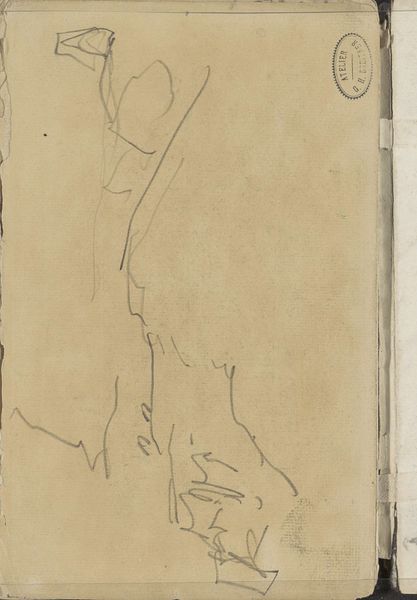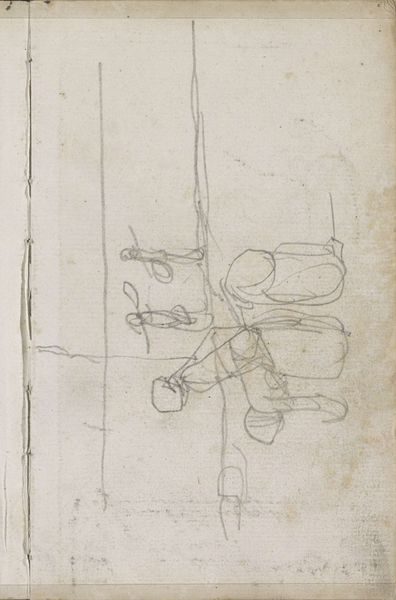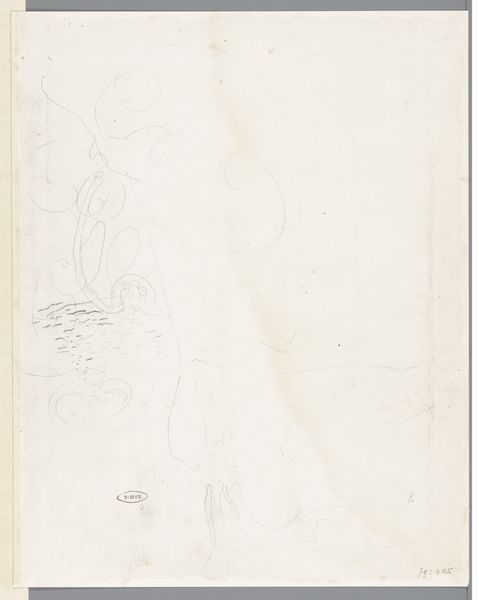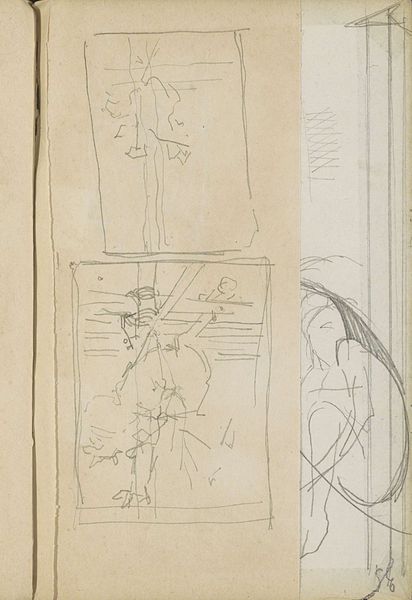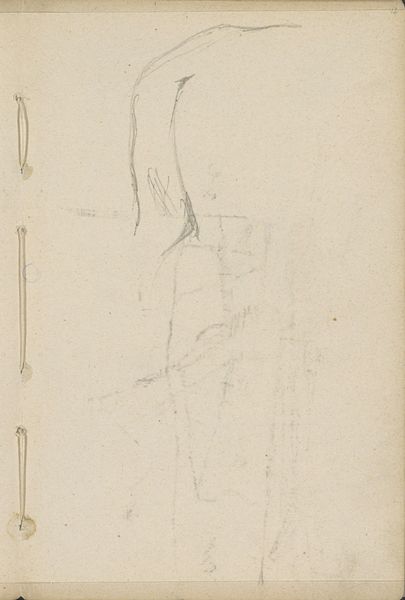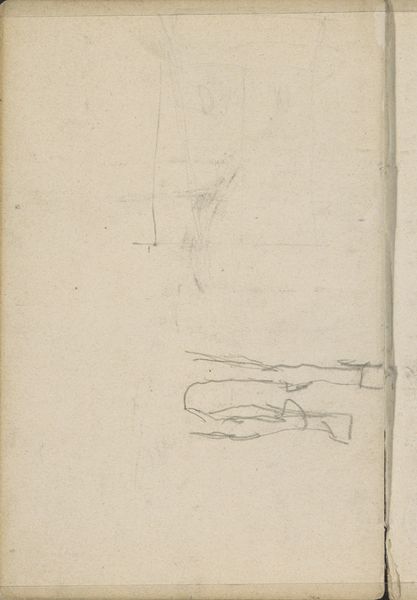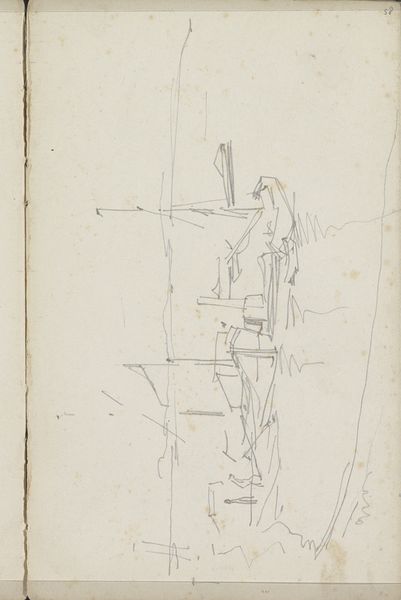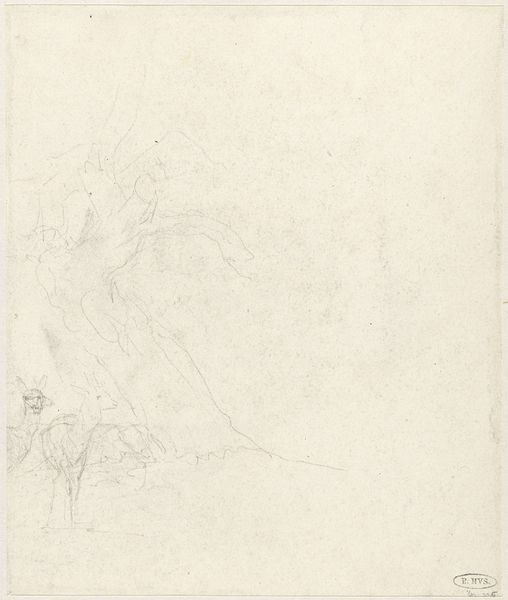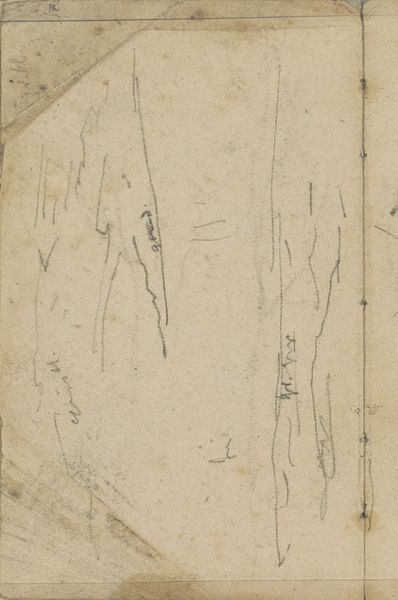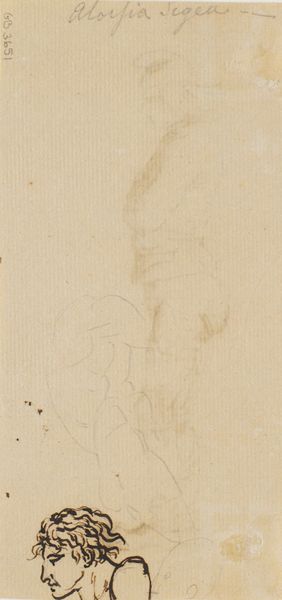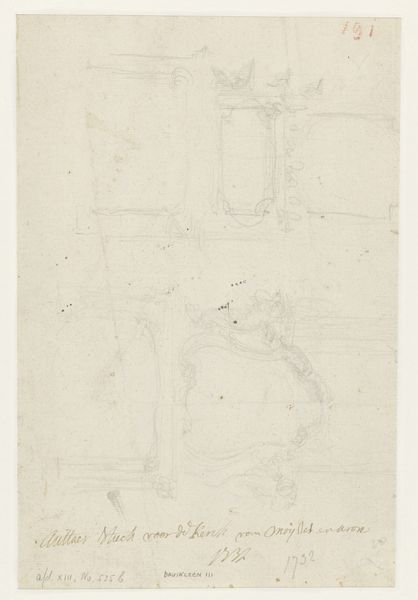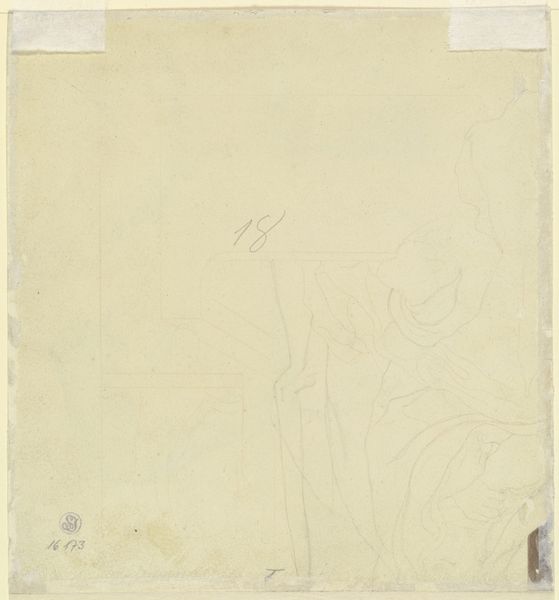
drawing, pencil
#
drawing
#
neoclacissism
#
form
#
pencil
Dimensions: 204 mm (height) x 157 mm (width) (bladmaal)
Curator: This pencil drawing is titled "Udkast til en konsol," which translates to "Draft for a Console," created between 1743 and 1809 by Nicolai Abildgaard. It's held here at the SMK. It’s fascinating to see such preliminary work. What's your first impression? Editor: Restrained elegance. Even in its skeletal form, the drawing has this sense of potential grandeur. It feels almost archaeological, as if uncovering a blueprint from a civilization obsessed with refined order and balance. Curator: Abildgaard, as you may know, was a champion of Neoclassicism. His artistry blends clean lines with antique motifs, evident in the stylized acanthus leaves and the symmetrical structure. Do you see anything meaningful in his decision to leave half of it seemingly unfinished? Editor: I am drawn to the asymmetry. Perhaps that incomplete aspect mirrors how classical ideals haunted subsequent eras—a yearning for perfection that remained perpetually out of reach. What cultural memory was the artist aiming to capture? The symbols employed here seem meticulously chosen. The stylized vegetal motifs perhaps evoking themes of regeneration, nature tamed by design… Curator: Definitely. The meticulous draftsmanship, though incomplete, evokes the rational principles that underpinned Neoclassical design. This was a movement reacting to what they perceived as the excesses of the Baroque and Rococo. Editor: Exactly, it's like a rejection of exuberance. The drawing is all about control and imposed harmony. Abildgaard understood how powerful forms and motifs can be—it's not just aesthetics, it's rhetoric rendered in visual terms. How can architecture shape a culture’s aspirations, even its soul? Curator: You have to remember too, he's drafting something meant to *hold* things...support is literally the idea here. Almost like illustrating moral rectitude. Editor: Interesting parallel. Leaving that support...unfinished then...I wonder, was he expressing a crisis of confidence or belief? Curator: Maybe the act of sketching itself was the core? Not so much the end product? Editor: Hmm, there’s always such a potent allure when one gains access to an artist's private contemplations... it provides insights far exceeding any finished monument could hope to yield. Curator: Indeed. It is like catching a glimpse of the gears turning.
Comments
No comments
Be the first to comment and join the conversation on the ultimate creative platform.
